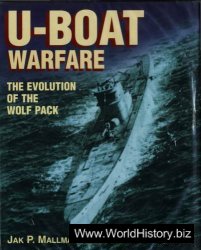Before the arrival of light-skinned people, or Europeans, had other non-Indian Pacific voyagers reached California in ancient times? Scholarly speculation centers around two possibilities: Polynesian and Chinese Pacific-crossers.
A small group of anthropologists and linguists is currently investigating whether early Polynesians reached California in watercraft sometime between 400 and 800 CE. UC Berkeley linguist Kathryn Klar and Cal Poly San Louis Obispo anthropologist Terry Jones published an article in the July 2008 issue of American Antiquity, claiming linguistic and archeological evidence for ancient Polynesian voyaging to southern California. They noted, for example, that the Chumash Indians, who inhabited the area around present-day Santa Barbara, continue to use the word tomol or the variant tomolo’o for “boat.” Moreover, tomol or tomolo’o did not refer to simply any kind of boat; instead it described an ocean-going, hand-sewn, redwood plank canoe. Polynesians are known to have used such canoes, built from redwood logs carried along Pacific currents to distant islands across that ocean. Klar and Jones note that the term tomolo’o, which appears in no other North American Indian language, is rooted in a Polynesian word. From this fragmentary evidence, the two scholars and others reason that the Chumash may have learned their extraordinary skills as Pacific mariners from ancient Polynesians who likely visited southern California’s shores centuries before the arrival of Europeans. Research into this matter is robust and ongoing.
A second possibility, based on scantier evidence than the first, is that in 458 CE an Afghan Chinese Buddhist monk, Hwui Shan, sailed across the Pacific with several other Chinese monks, exploring much of North America’s western coastline from Alaska southward to the tip of Baja California. According to Chinese records dating to the late fifth century CE, such a round-trip voyage was undertaken and Hwui Shan noted his sighting of tall trees of red wood and topographical features resembling the diverse land masses found from the Northwest Coast to that of Baja. While such a voyage was possible, physical evidence remains lacking and present-day scholars in the United States are hesitant to affirm or deny a Chinese discovery of America nearly a millennium before Columbus.
SUMMARY
California’s land mass, climates, and other physical features were shaped largely by Pacific forces, and these features profoundly influenced the state’s subsequent human history. The earliest human inhabitants migrated from Asia’s Pacific Rim in watercraft and afoot, and lived mainly in coastal areas, adapting their cultures - especially their foods, dress, and tool-making - to a hospitable marine environment. This was less true, naturally, for tribe-lets living in the interior regions, though trade between coastal and hinterland Indians remained brisk throughout most of the pre-European contact period. California’s tribelets were severely provincial, as evidenced by the scores of languages and hundreds of dialects they spoke, making communication between these linguistic groups extremely difficult. Anthropologists give the physically healthy California Indians high marks not only for living in an ecologically sustainable manner, but also for their artistry, especially seen in their basketry and petroglyphs. Alfred L. Kroeber, an early researcher of California’s native peoples, attained a national reputation and helped shape the field of his expertise throughout most of the twentieth century.
Among all of California’s Indian groups, the Chumash developed the most advanced maritime culture, based on a trade network that extended in many directions beyond the present boundaries of the state. In short, their economy embraced a Greater California. Aside from Paleo-Indian seafarers, California may have been visited by Polynesian and Chinese Pacific-crossers centuries before the arrival of Europeans in the province. Much more evidence, however, will be needed to substantiate the likelihood of Polynesian and Chinese transpacific visits to California before the arrival of Europeans in the 1500s.
REVIEW QUESTIONS
• In what ways were California’s landmass and climates shaped by Pacific forces?
• How and when did California’s first human inhabitants arrive in the area that much later became the Golden State? What was the so-called “Kelp Highway,” as explained by anthropologist Jon M. Erlandson, and why was it significant?
• What evidence do scholars offer to support their claim that the lifestyles of California’s Indians were sustainable before the arrival of Europeans?
• Who was Ishi and why was he significant in California history? What was anthropologist Alfred Kroeber’s connection to Ishi?
• How did the Pacific maritime economy of the Chumash impact the interior reaches of California, Oregon, the Southwest, and the Great Basin?
FURTHER READINGS
LoweU J. Bean, “Indians of California: Diverse and Complex Peoples,” California History, 71 (Fall 1992), 302-23. The author offers a readable and well-illustrated overview of the California Indians from pre-contact times to the late twentieth century.
Warren A. Beck and Ynez. D. Haase, Historical Atlas of California (Norman, OK: University of Oklahoma Press, 1974). Though dated, this is still a useful source especially for geography, climate, and other natural features of the state.
Thomas C. Blackburn, ed., December’s Child: A Book of Chumash Oral Narratives (Berkeley: University of California Press, 1975). The study affords a description of anthropologist John P. Harrington’s huge collection of unpublished notes and writings on the Chumash plus tribal oral narratives drawn from those materials.
Thomas C. Blackburn and M. Kat Anderson, eds., Before the Wilderness: Environmental Management by Native Californians (Menlo Park, CA: Ballena Press, 1993). This book covers Indian adaptations to California’s diverse landforms and biological zones.
Joseph L. Chartkoff and Kerry Kona Chartkoff, The Archaeology of California (Stanford, CA: Stanford University Press, 1984). Readers are treated to a highly detailed and well-illustrated account of California’s earliest Paleo-Indian settlers and how they lived.
J. M. Erlandson, M. L. Moss, and M. Des Lauriers, “Life on the Edge: Early Maritime Cultures of the Pacific Coast of North America,” Quaternary Science Reviews, 27 (2008), 2232-45. This is a cutting-edge source for the maritime explanation of California’s earliest settlements.
Brian M. Fagan, Ancient North America: The Archaeology of a Continent (New York: Thames & Hudson, 2005). A comprehensive college-level anthropology textbook, this volume pays particular attention to ancient peoples living along North America’s Pacific coastline.
Brian M. Fagan, Before California: An Archaeologist Looks at Our Earliest Inhabitants (Walnut Creek, CA: AltaMira Press, 2004). An anthropological-archaeological tour through Indian-occupied California, this study contains testimonies drawn from travelers, scholars, and natives.
Philip L. Fradkin, The Seven States of California: A Natural and Human History (Berkeley: University of California Press, 1995). This work provides a traveling journalist’s view of the state’s major geographical regions and their respective histories.
Lynn H. Gamble, The Chumash World at European Contact: Power, Trade, and Feasting Among Complex Hunter-Gatherers (Berkeley: University of California Press, 2008). This specialized work offers a distillation of the most recent scholarly findings regarding the Chumash.
Ramon A. Gutierrez and Richard J. Orsi, eds., Contested Eden: California Before the Gold Rush, a special issue of California History, 76/2 and 3 (Summer and Fall 1997). See especially the articles by M. Kat Anderson, Michael G. Barbour, and Valerie Whitworth, “A World of Balance and Plenty: Land, Plants, Animals, and Humans in a Pre-European California” (pp. 12-47), and William S.
Simmons, “Indian Peoples of California” (pp. 48-77). These writings cover both the early and later history of the California Indians, particularly their ecologically informed lifestyles.
Derek Hayes, Historical Atlas of California (Berkeley: University of California Press, 2007). This book contains original maps and commentaries plus excerpts from historical documents related to the historical geography of California.
R. F. Heizer and M. A. Whipple, The California Indians: A Source Book (Berkeley: University of California Press, 1971). This is a classic compendium of information on California’s Indians from prehistoric times to the late twentieth century.
David Hornbeck, California Patterns: A Geographical and Historical Atlas (Palo Alto, CA: Mayfield Publishing, 1983). This dated but otherwise excellent collection of maps and charts elucidates California history from the pre-contact period to the 1980s.
Douglas J. Kennett, The Island Chumash: Behavioral Ecology of a Maritime Society (Berkeley: University of California Press, 2005). This account offers a synthesis of the cultural and environmental history of the Northern Channel Islands and their Chumash inhabitants who arrived 13,500 years ago.
Theodora Kroeber, Ishi in Two Worlds: A Biography of the Last Wild Indian in North America (Berkeley: University of California Press, 2004). The author reveals the human and tragic consequences of a lone Indian’s brief experience of living in a white world.
Leif C. W. Landberg, The Chumash Indians of Southern California (Los Angeles: Southwest Museum, 1965). This is a brief, scholarly yet readable introduction to the basic aspects of Chumash culture, including tools, foods, seasonality, and ecology.
Kent G. Lightfoot and Otis Parrish, California Indians and Their Environment (Berkeley: University of California
Press, 2009). The author provides a recent synthesis of the latest scholarship on the complex and environmentally sophisticated cultures of California’s Indians.
John McPhee, Assembling California (New York: Farrar, Straus & Giroux, 1993). This book is the starting point for understanding the role of plate tectonics in the geological formation of California.
Mains’l Haul: A Journal of Pacific Maritime History, 47/1 and 2 (Winter/Spring 2011). The theme of the issue is “Prehistory: Pacific Seafarers and Maritime Cultures.” The articles make a strong case for Asian Pacific seafarers being the first peoples to inhabit the western coastline of the Americas.
Malcolm Margolin, The Ohlone Way: Indian Life in the San Francisco-Monterey Bay Area (Berkeley: Heyday Books, 1978). This work focuses on the pre-contact history of these northern California aborigines.
Keith Heyer Meldahl, Rough-Hewn Land: A Geologic Journey from California to the Rocky Mountains (Berkeley: University of California Press, 2011). The connection between California gold and the primordial floor of the Pacific Ocean is explained in this readable account of plate tectonics and the ever-changing Far Western landscape.
James J. Rawls, Indians of California: The Changing Image (Norman, OK: University of Oklahoma Press, 1984). With effect, the author argues that nineteenth-century white American images of Native Californians reveal more about the observers than those being observed.
John W. Robinson, Gateways to Southern California: Indian Footpaths, Horse Trails, Wagon Roads, and Highways (Arcadia, CA: Big Santa Anita Historical Society, 2005). This book connects early Indian trails with later EuroAmerican overland routes into southern California.
Allan A. Schoenherr, A Natural History of California (Berkeley: University of California Press, 1992). This is an encyclopedic work detailing the diverse landforms and flora and fauna of the state.




 World History
World History









